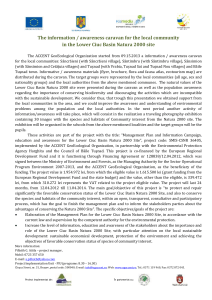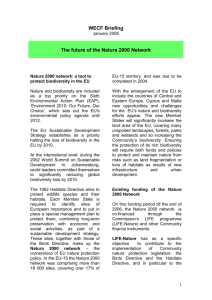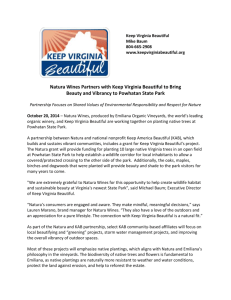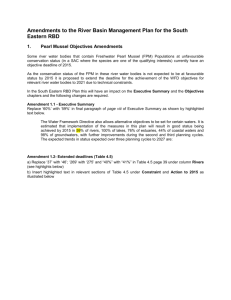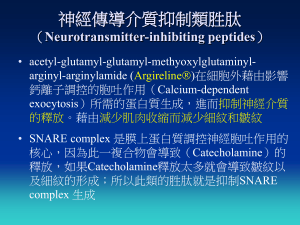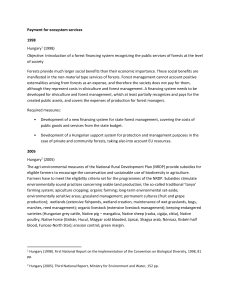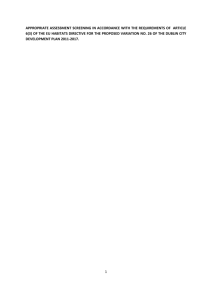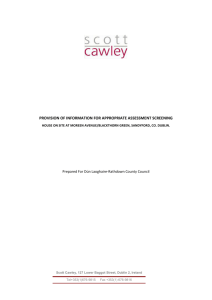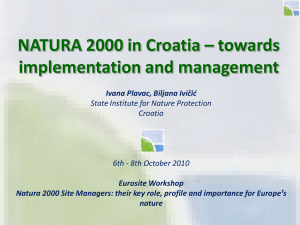- User innovation
advertisement
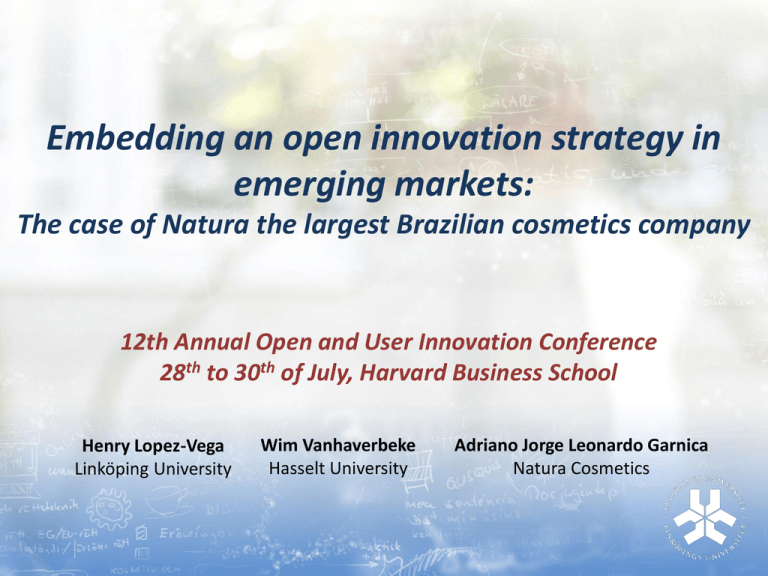
Embedding an open innovation strategy in emerging markets: The case of Natura the largest Brazilian cosmetics company 12th Annual Open and User Innovation Conference 28th to 30th of July, Harvard Business School Henry Lopez-Vega Linköping University Wim Vanhaverbeke Hasselt University Adriano Jorge Leonardo Garnica Natura Cosmetics 1. Research background • Inbound open innovation (OI) entails search strategies to: 1) acquire from technology markets and 2) source from scientific– or market-based communities (Dahlander and Gann, 2010; Boudreau and Lakhani, 2009) • Acquisition is presented through collaborations with upstream and downstream partners, alliances, etc. to conduct more “local search” (cf. Du et al., 2014, Laursen and Salter, 2006) • Sourcing from communities facilitates “distant search” (Jeppesen and Lakhani, 2010). – Use of intermediaries e.g. NineSigma, InnoCentive (Jeppessen and Lakhani, 2010; Sieg et al. 2010; Lopez-Vega et al., 2012; Sawhney et al., 2003) – Proprietary platforms e.g. Connect+Development (Huston and Sakkab, 2006), GE’s Ecomagination (Chesbrough, 2012) – Crowdsourcing, innovation contests (cf. Afuah and Tucci, 2012; Terwiesch and Xu, 2008) 1 1. Research background (cont.) • The shift from Closed to Open Innovation entails changes in formal and informal practices that could facilitate the shift from a closed innovation to an open innovation mindset (Chesbrough and Brunswicker, 2013) • Limited research explains how firms implement an open innovation strategy – Unfreezing, moving, institutionalizing (Chiaroni et al., 2010) – Climate for innovation, partnership capacity, internal process (Enkel et al., 2010) In this paper, we explain: How firms’ proprietary platforms are used to embed open innovation into their innovation strategy? • How firms create and integrate an open innovation platform into their innovation strategy? • How does the adoption of an open innovation strategy changes the practices of managing firm’s proprietary platform overtime? 2 Research strategy Methodological considerations • • Most open innovation research is at technological firms; in emerged markets; cross-sectional Innovation in the cosmetics industry (Jones, 2011) – Fast growth, differentiation, competitiveness Research setting • Single-case study of a multinational cosmetics MNC – Natura Cosmetics S.A. founded in 1969; 6300 employees; Revenue US$ 3 billion; Business model: Direct selling – Among the 10 most innovative companies in the World (Forbes, 2013) Data collection • • • 22 Interviews with Natura employees Archival and confidential information from Natura Information around Natura’s innovation platform : – – Natura Campus Program iQuicar Analytical approach • • Mapping the strategy implementation inductive identification of stages to interpret the learning processes involved 3 OI platform: Natura Campus Program 2001 – 2005 – – – – Specific participation in R&D activities with universities, local gov. funding agencies named Natura Campus Context: Early investments in research; first approach to academia; no clear direction or intention to start with OI Building blocks: No formal structure for open innovation; scientific based initiatives 1st interaction of Natura with local scientific community to contract 9 projects 2006 – 2010 – 2006 Natura Campus program is launched to maintain a permanent channel to receive ideas from Brazilian’s scientific community • – – – Context: Federal innovation law; OI as strategic choice for research Building blocks: Dedicated team; partnership policy (academia); use of intermediaries and consultants Four main pillars: • • • • – Natura seeks for more radical results to gain the attention of scientists as results do not achieve the expected results Register Brazilian scientists based on their scientific competences and interest to collaborate with Natura Proposals to collaborate with Natura Possibility to conduct research within Natura’s R&D offices Award and prize for the best scientific initiatives Connection with academia: 104 project proposals, 33 acquired projects; collaboration with 20 different universities/R&D institutions, 205 groups connected to Natura Campus Program; 2 patents and 1 license; etc. 4 OI platform: Natura Campus Program (cont.) 2011 – 2013 – More interaction and deeper relationship with scientists to obtain more radical solutions and proposals from Brazilian and international partners – Stronger connection between R&D units with business units • Culture changing: +60 employees involved in OI – Context: Radical expansion of the OI model; change in the structure for OI team; OI strategy – ecosystem; OI management system – Building blocks: Relationship model; orientation team for partnerships – New challenges to manage partnerships lead to the creation of other platform IQlicar – New forms of collaboration to interact with clients i.e. co-creation, Hackaton – Projects approved 13; 450 received proposals, interaction with over 100 institutions, 2 call for proposals and 5 innovation challenges i.e. sustainable packaging, new ingredients for tree phasic oil 5 Acquiring platform: iQlicar • In 2011, fast increase in demand (OI strategy), small specialization team acting as internal consultants for IP and partnership modes, complex and long process, collaboration with more and distant partners lead to numerous problems: – Who are our partners?; what are they doing?; how are their deliverables?; how to improve their contribution? • The response was to create a partnership orientation team that: – – Decreases time to establish partnerships Increase closeness to internal R&D teams getting positive feedback 6 4) Results generation 3) Discontinuous 4) Low rate 2) Global innovation 3) Create identity 4) Differentiate and accelerate 1) Integrated 2) International 3) Engaged and connected in research 4) Multi-tool: Science and market driven Activities 3) Ecosystems approach 2) Brazil 1) Program 2016 – 2013 2) Geographic range 1) Fragmented 2006 –2010 Key elements 1) Relationship Strategic drivers Progress between 2006 to 2013: Natura’s open innovation program 1) Different partners (beyond academia with multi-channel systematic connection) 2) Connection with international partners 3) Communicate R&D created within Natura 4) Innovation challenges and open calls 7 Conclusions, contributions and limitations • In emerging markets where collaborations with scientific– and market–based partners are new or nonexistent – – – • While platforms from large MNCs can attract a large pool of solvers (Huston and Sakkab, 2006, Sieg et al., 2010; Boudreau et al., 2011) – – – • MNCs from emerging markets need to attract the interest of local actors and international actors Managers are key to involve internal R&D units and external national players onto MNC’s OI strategy Improvements in processes need to be designed to progressively learn how to launch ‘calls for projects’, evaluate and integrate solutions Previous research highlighted OI can be implemented ‘unfreezing’ the organizational structure, process (Chiaroni et al., 2010; Enkel et al., 2010) – – • firms initiating open innovation could use platforms to progressively embed open innovation into its strategy A sourcing platform is necessary to search and select technologies and solutions from local and distant scientific fields An acquiring platform is necessary to co-ordinate the acquisition of external solutions and maintain the relationship with external partners A platform can help in the implementation of an Open Innovation strategy without significant changes in the org. structure MNCs need to create a specific innovation management unit responsible to co-ordinate open innovation The search of solutions from: – – Local actors i.e. Amazonian universities provide more explorative solutions. Yet these are easier to obtain and more valuable to extend and accelerate project portfolio i.e. new fragrances, components. International actors tend to provide mode radical solutions to solve highly technological problems Limitations: • • • • The study of one firm and one market which does not include MNCs from other (similar) emerging markets i.e. BRICs Other OI measurement variables i.e. IP issues, performance of acquired solutions Compare different modes to embed OI i.e. platforms, market transactions, university-industry collaborations Compare with other Cosmetic companies in Brazil and other international MNCs L’oreal as well as the role of subsidiaries 8 Embedding an open innovation strategy in emerging markets: The case of Natura the largest Brazilian cosmetics company 12th Annual Open and User Innovation Conference

